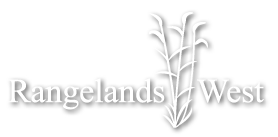RestoreNet Colorado
Seeding on rangelands has a high rate of failure, which makes restoration difficult. Yet many landowners and managers are eager to know what works to restore degraded rangelands.
Restoration on Degraded Rangelands to Benefit Managers in Colorado
In 2021, Dr. Carrie Havrilla of the Dryland Ecology and Management Lab, Emily Lockard, Retta Bruegger of CSU Extension, and others established two research plots in southwest Colorado test strategies for restoration on degraded rangelands. We use seed mixes adapted for current and future climate and pair seeding with additional strategies to increase soil-moisture retention and ideally restoration success. The experiment lasts for 10 years.
Seeding Strategies We Are Testing
- Native seed mixes adapted for current climate and future climate.
- Seed mixes plus a soil moisture retention strategy including, mulch and pits*.
- Planting native seedlings.
- Seed balls (seed pellets).
- Locally-sourced seeds and mulch.
- Stone media lunas*.
- Weed control (herbicide) plus seeding.
- Compost and biochar.
*Treatments rooted in Traditional Ecological Knowledge
Key Findings so Far
- Seed ball treatments may hold potential for increased germination under dry conditions.
- Planting patches of native seedlings has been more successful than seeding treatments to date.
- Weeds continue to pose significant barriers to revegetation. Additional weed management may be needed for success.
Learning how to Restore Degraded Rangelands from Across the Southwest
The experiment is part of a network of sites across the southwestern US, led by the US Geological Survey, called RestoreNet.
Search:
Categories
- No categories





